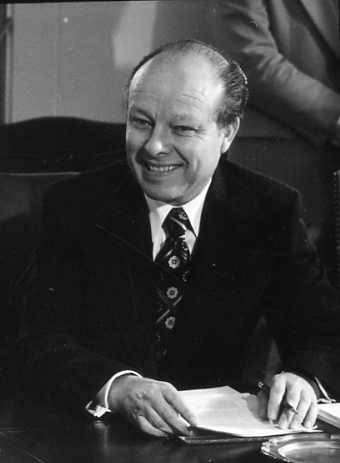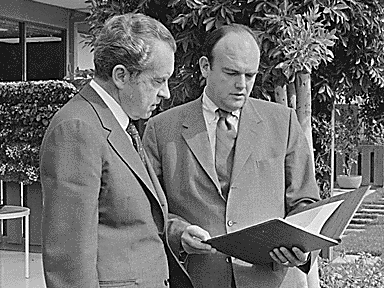
In 1968 RN appointed Roy Ash Chairman of the President’s Council on Executive Organization. The Ash Council’s 1969 Report recommended the creation of a Domestic Council and an Office of Management and Budget. Ash became OMB’s Director in 1972.
Forty years ago today, after fourteen months of study and refinement, RN unveiled his Reorganization Plan 2 of 1970, including the Domestic Council and the Office of Management and Budget.
The Nixon Administration’s innovations regarding executive office management and efficiency and government reorganization have been among its most enduring legacies. As the Nixon Foundation and the Nixon Presidential Library examine the administration’s domestic legacy each month in the Nixon Legacy Forums, this March 12th Transmittal Message is the Ur-document outlining the organizational and operational structure that would help effect and enable President Nixon’s New American Revolution.
In his Transmittal Message to Congress, RN described the problem before presenting his solution.
The past 30 years have seen enormous changes in the size, structure and functions of the Federal Government. The budget has grown from less than $10 bib lion to $200 billion. The number of civilian employees has risen from one million to more than two and a half million. Four new Cabinet departments have been created, along with more than a score of independent agencies. Domestic policy issues have become increasingly complex. The interrelationships among Government programs have become more intricate. Yet the organization of the President’s policy and management arms has not kept pace.
Over three decades, the Executive Office of the President has mushroomed but not by conscious design. In many areas it does not provide the kind of staff assistance and support the President needs in order to deal with the problems of Government in the 1970’s. We confront the 1970’s with a staff organization geared in large measure to the tasks of the 1940’s and 1950’s.
The lessons learned from Daniel Patrick Moynihan’s 1969 Urban Affairs Council, and the Cabinet Committee on the Environment and the Council for Rural Affairs, were applied to the structuring of the more comprehensive Domestic Council:
Among the specific policy functions in which I intend the Domestic Council to take the lead are these:
- Assessing national needs, collecting information and developing forecasts, for the purpose of defining national goals and objectives.
- Identifying alternative ways of achieving these objectives, and recommending consistent, integrated sets of policy choices.
- Providing rapid response to Presidential needs for policy advice on pressing domestic issues.
- Coordinating the establishment of national priorities for the allocation of available resources.

RN and Domestic Council Executive Director John Ehrlichman at the Western White House in San Clemente in February 1973.
The creation of the Office of Management and Budget represented the wrenching of the old Bureau of the Budget into the seventh decade of the twentieth century:
However, creation of the Office of Management and Budget represents far more than a mere change of name for the Bureau of the Budget. It represents a basic change in concept and emphasis, reflecting the broader management needs of the Office of the President.
The new Office will still perform the key function of assisting the President in the preparation of the annual Federal budget and overseeing its execution. It will draw upon the skills and experience of the extraordinarily able and dedicated career staff developed by the Bureau of the Budget. But preparation of the budget as such will no longer be its dominant, overriding concern.
While the budget function remains a vital tool of management, it will be strengthened by the greater emphasis the new office will place on fiscal analysis. The budget function is only one of several important management tools that the President must now have. He must also have a substantially enhanced institutional staff capability in other areas of executive management-particularly in program evaluation and coordination, improvement of Executive Branch organization, information and management systems, and development of executive talent. Under this plan, strengthened capability in these areas will be provided partly through internal reorganization, and it will also require additional staff resources.
The new Office of Management and Budget will place much greater emphasis on the evaluation of program performance: on assessing the extent to which programs are actually achieving their intended results, and delivering the intended services to the intended recipients. This is needed on a continuing basis, not as a one-time effort. Program evaluation will remain a function of the individual agencies as it is today. However, a single agency cannot fairly be expected to judge overall effectiveness in programs that cross agency lines–and the difference between agency and Presidential perspectives requires a capacity in the Executive Office to evaluate program performance whenever appropriate.

